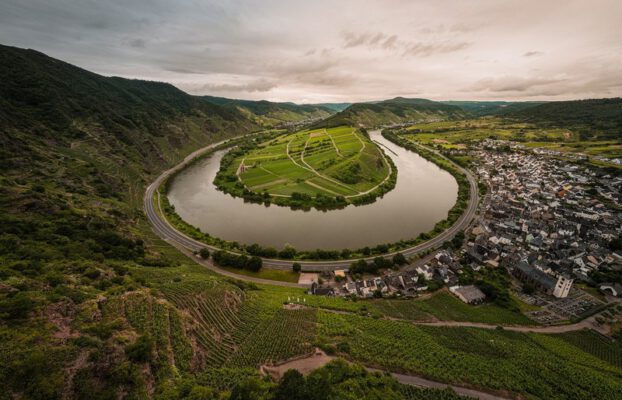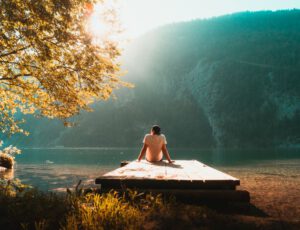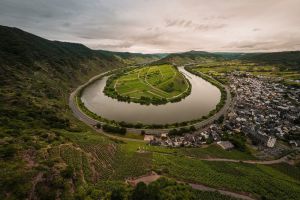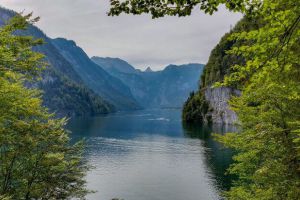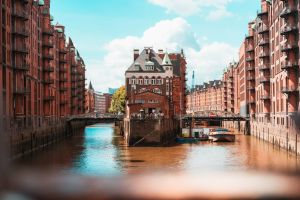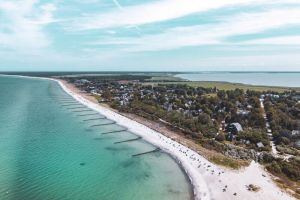A road trip along the Moselle is truly spectacular. Almost the entire route takes you along the banks, past the remnants of the Roman past and endless vineyards, whose products you can enjoy in almost every Moselle village in the evening. In this article, I’ll tell you which Moselle sights you shouldn’t miss on this road trip and give you lots of tips on excursions and accommodation.
I needed a total of 5 days for this road trip and I was traveling in my own van. Theoretically, you could also do it in a weekend. But I wouldn’t recommend that, because then you’re just rushing from one place to the next. If you have more time, you can stay much longer in the individual towns and explore a few more of the smaller wine villages along the Moselle route.
I will also give you recommendations for overnight stays along the route. There are cool campsites but also the odd hotel if you need a little more comfort. I have selected the accommodation so that you can also explore the surrounding area from there.
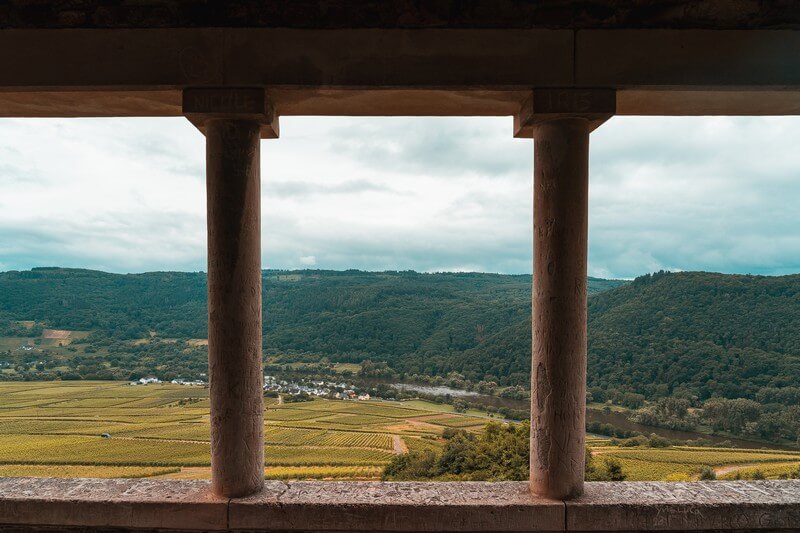
I would also recommend taking a bike with you on your Moselle route, as there are really great cycle paths along the Moselle sights in this article. Otherwise, you can also go hiking or drive to the individual places a little further away from your accommodation.
You can also find all the Moselle sights along the river here on the map:
1. Koblenz
The Moselle Route begins in the historic town of Koblenz. You should definitely visit the Deutsches Eck with its magnificent monument to Kaiser Wilhelm.
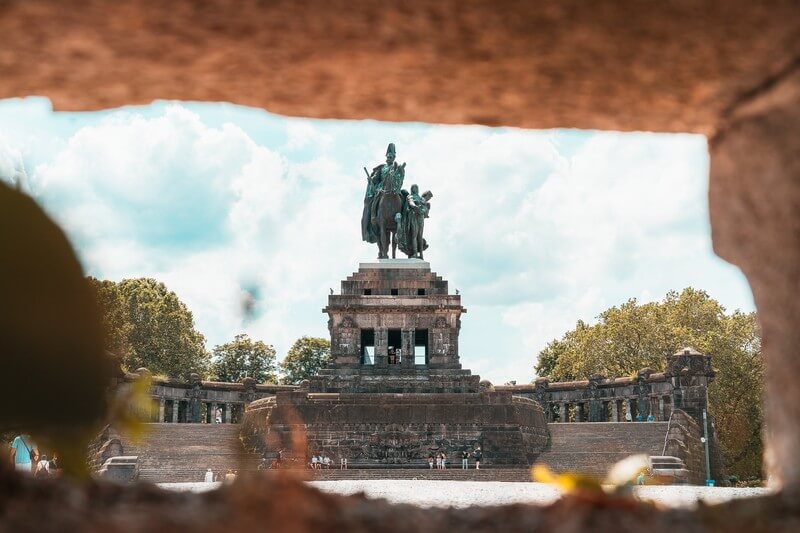
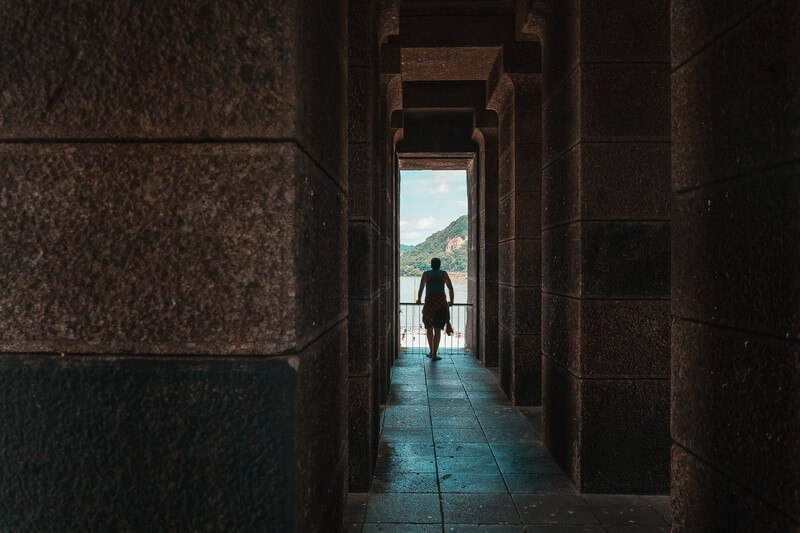
This spot also marks the place where the Moselle flows into the Rhine. You will be able to separate the two rivers very easily due to their different colors.
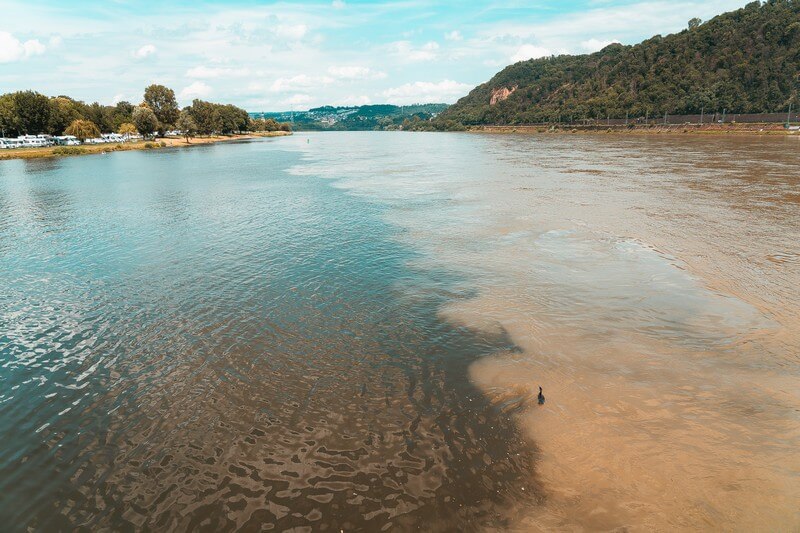
But it is also worth strolling through Koblenz Old Town and along the banks of the Rhine and Moselle. Ehrenbreitstein Fortress also rises up on the Rhine side. From Konrad-Adenauer-Ufer, you can take the cable car directly across the Rhine to the fortress. A combined ticket costs 17.90 and you can buy it directly online here. There are also one-way tickets just for the cable car or just for the fortress.
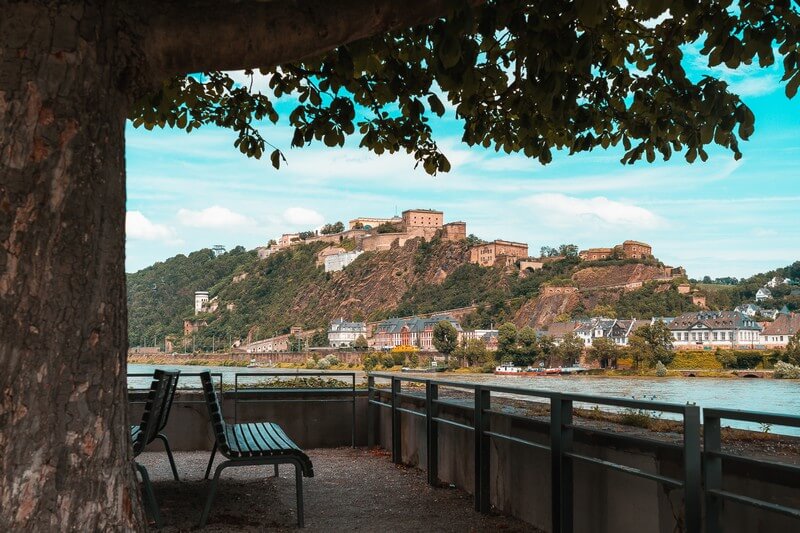
Wenn du genug Zeit hast, dann unternimm doch eine Schifffahrt entlang des Oberen Mittelrheintals. Diese dauert etwa 2 Stunden, führt dich an zahlreichen Burgen vorbei und ist bei Besuchern von Koblenz sehr beliebt.
If you are looking for more tips for Koblenz, then take a look at the following article:
It’s also worth spending a night in Koblenz if you have a slightly longer journey.
Try the Hotel Fährhaus. It’s not right in the old town, but it’s in a super idyllic location right on the Moselle. The view from the terrace is especially wonderful. And since Koblenz isn’t that big, the walk from the hotel into the city is really easy.
2. Hatzenport and Kreuzlay
Hatzenport is a small village on the lower Moselle. Wine is grown here on terraces along the banks of the steep slopes.
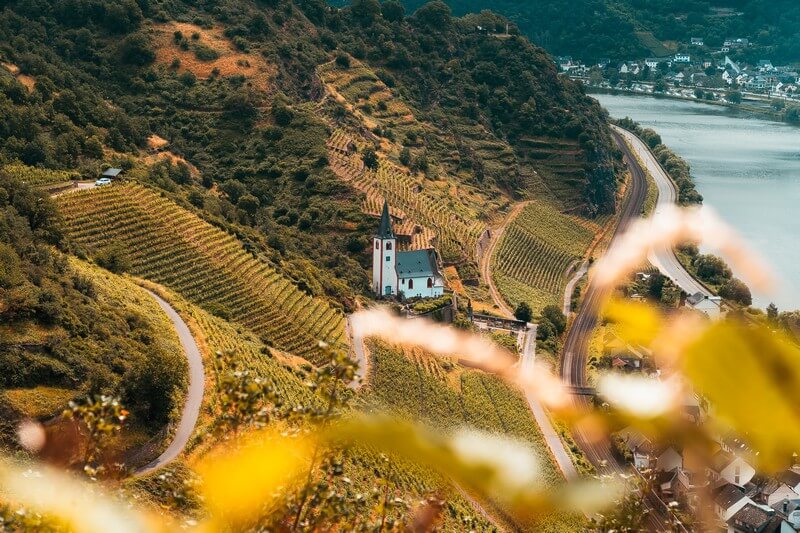
Hatzenport is an ideal starting point for excursions and tours in the surrounding area. The “Campinginsel Sonnenwerth” campsite is perfect for an overnight stay. The cool thing about it is that the campsite is located on an island in the middle of the river, which you can only reach via a small access road.
A great viewpoint is the Kreuzlay, for example, which is only a 30-minute walk from the valley. The steep path to get there is quite strenuous, but the fantastic view is definitely worth it.
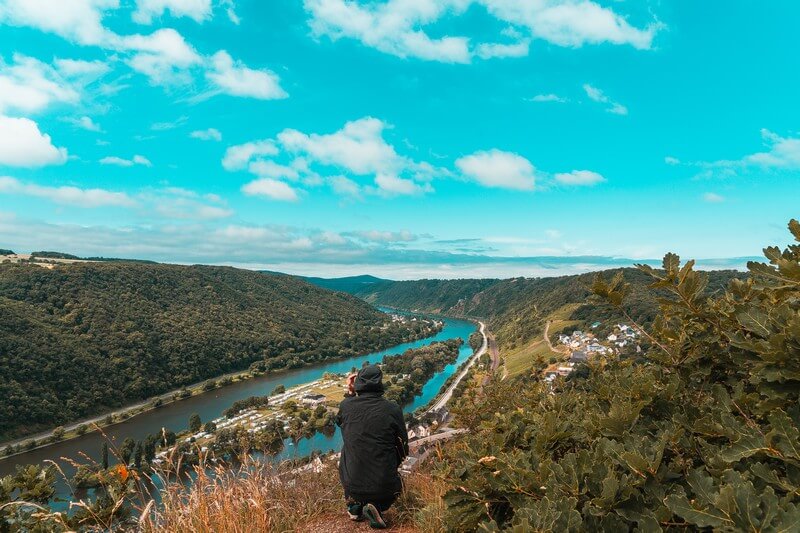
By the way: There are also a few smaller hotels and vacation apartments in Hatzenport and the region.
3. Eltz Castle
Not directly on the Moselle, but only about 20 minutes by car (or 2 hours on foot, or 50 minutes by bike) is probably one of the most famous castles in Germany – Eltz Castle.
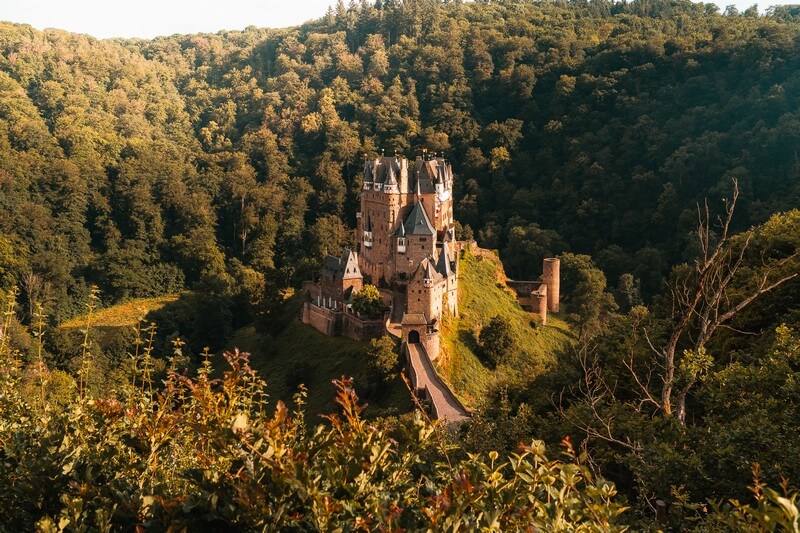
A circular path leads from the castle parking lot to the entrance and back. If you walk along this path, you can also explore the castle from the side. The path from St. Anthony’s Chapel offers the best view of Eltz Castle from above.
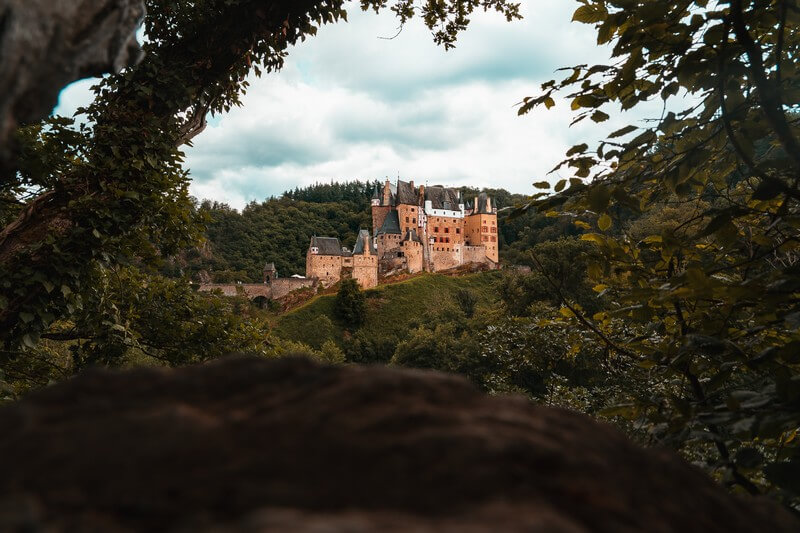
But be prepared for long queues when you visit this castle. Visitors often queue right outside the entrance. You can expect up to 2 hours or more. The signs at the queue indicate how long it will take to get into the castle from there.
You can only go inside the core castle on a guided tour (admission €12). However, this is worthwhile as you will learn lots of details about the castle, its owners and life here in the Middle Ages.
If you just want to take photos of Eltz Castle, it’s best to come in the evening after 5:30 pm. By then, the entrance is already closed and most tourists have already returned to their accommodation.
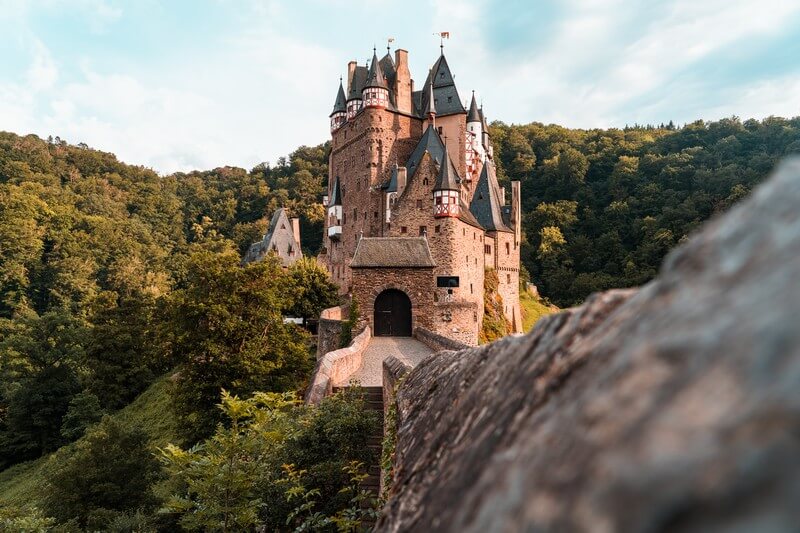
Tip: If you want to reach Hatzenport Castle by bike, it is best not to cycle via Bischofstein Castle, even if Google Maps shows you a route here. There is a path here, but it is not suitable for bikes. It is more of a steep hiking trail and you would have to carry your bike up this path. It’s doable, but not for everyone.
4. Geierley suspension rope bridge
The Geierlay suspension rope bridge is mainly known from social media. At 360 m long, it is one of the largest in Germany and is only around 30 minutes by car from Hatzenport.
You walk across the Mörsdorf stream valley at a height of around 100 m and should definitely be free from giddiness and have no fear of heights. You pay a parking fee instead of an entrance fee. For the parking lot directly at the visitor center it is 10,- € for the first 4 hours, after that 1,- € for every 15 minutes or part thereof. There are also 2 other parking lots that are a little further away, but also cheaper. A parking lot for hikers outside of Mörsdorf is even free of charge.
5. Cochem
Cochem, with its castle towering over the town, is one of the most famous places along the Moselle.
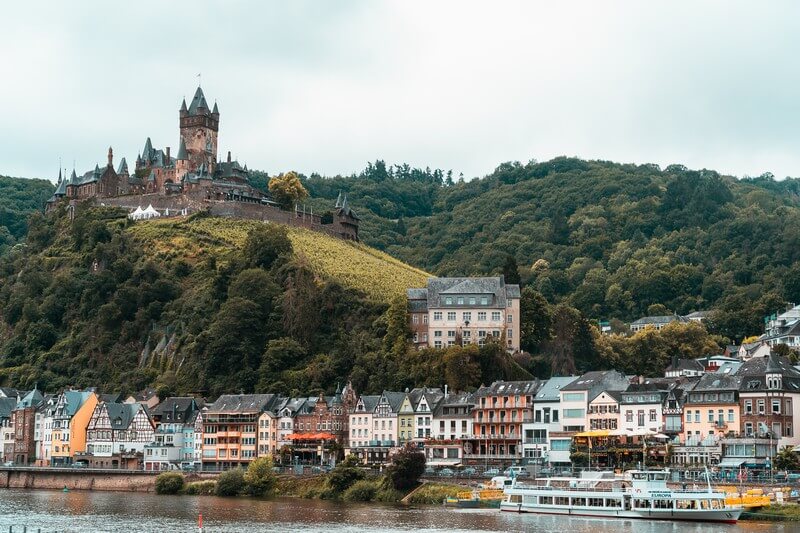
All the castles along the Moselle were actually destroyed by the troops of the Sun King Louis 14th in the 17th century. In Cochem, however, the rich Louis Ravené bought the ruins and had them rebuilt from 1869 to 1877 according to old plans. It is worth a visit for the spectacular view from the floating balcony alone. But you will also learn all kinds of historical details about the town’s past and the castle on a guided tour.
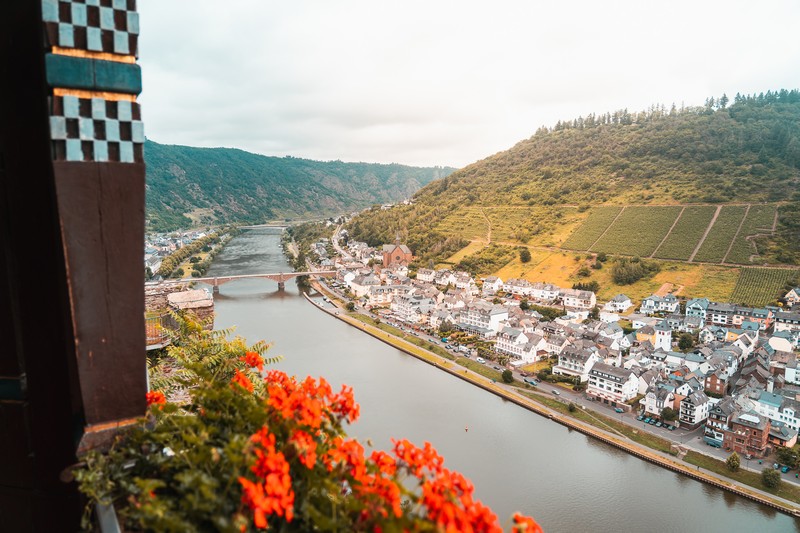
Guided tours of the castle cost €7 per adult, take place every 15 minutes during opening hours and last around 40 minutes.
Otherwise, it is also worth exploring the medieval town center of Cochem on your own and walking back and forth along the two banks. From the cafés on the roadside, especially those on the riverbank, you always have a wonderful view of the castle and the historic facades of the town.
There are also a few activities in Cochem that are worthwhile if you are only in town for a short time and don’t have enough time for an extensive exploration:
- Panoramic boat trip on the Moselle (1 hour)
- Private guided tour (1,5 hours)
- Panorama boat tour 1 hour to Ernst and back
- Full day tour with castle tour, Moselle boat trip and wine tasting (7 hours)
6. The Roman graves near Nehren
Nehren is one of the oldest winegrowing villages on the Moselle. It was mentioned in documents as early as 634 AD. The Romans were here at that time. There is still a site from this period that you can visit. The Roman tombs of Nehren are located at the top of a vineyard and from up there you have a fantastic view over the wine landscape and the Moselle.
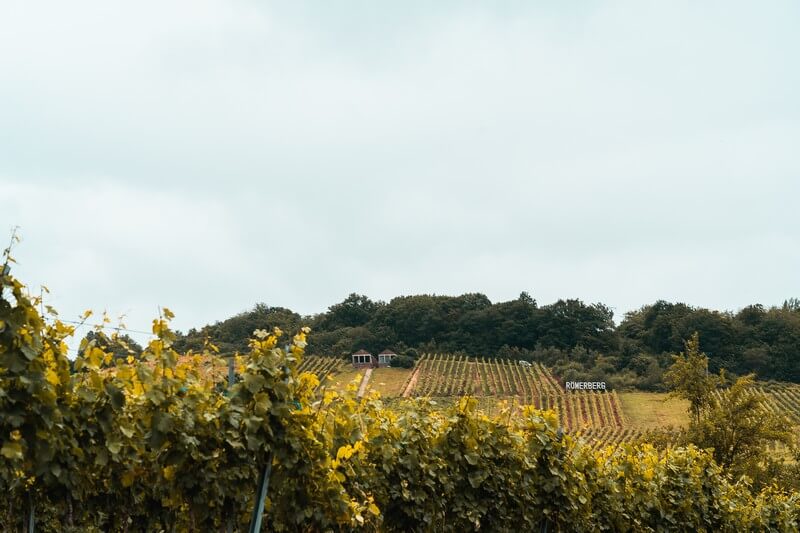
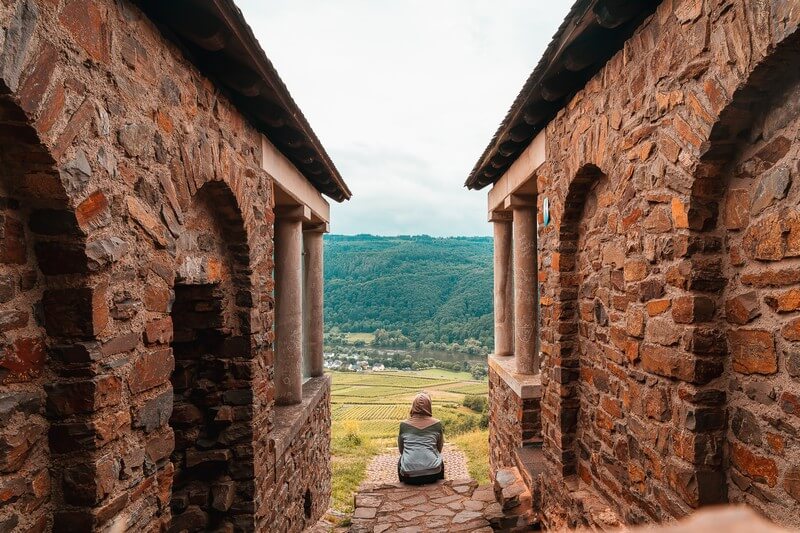
I can recommend the Holländischer Hof campsite near Nehren. The pitches are right on the water and the Dutch simply know what you need for camping. There is nothing lacking here.
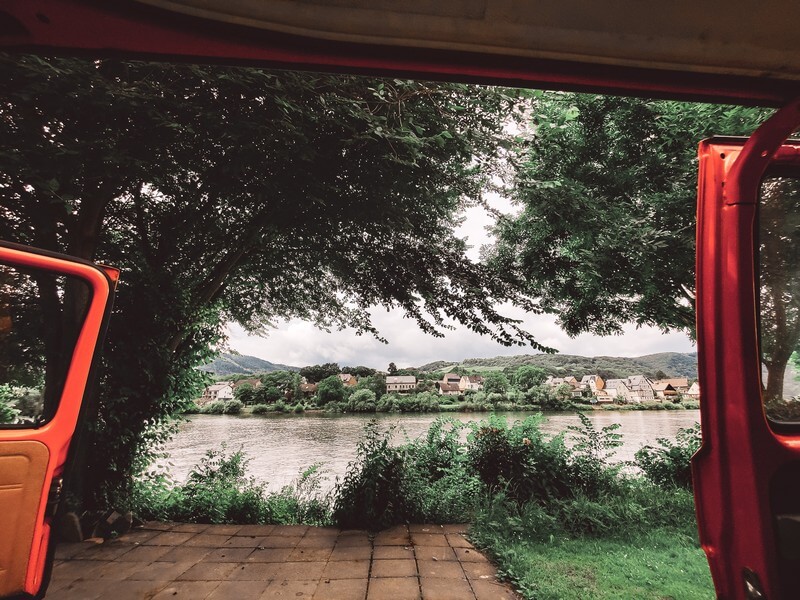
From this campsite, you can easily explore Nehren and the region around Brenn by bike.
7. Stuben Monastery
The Stuben monastery is actually just a ruin, but its location right on a windy bend in the Moselle makes it a perfect photo opportunity. A lot of wine is also grown around the ruins.
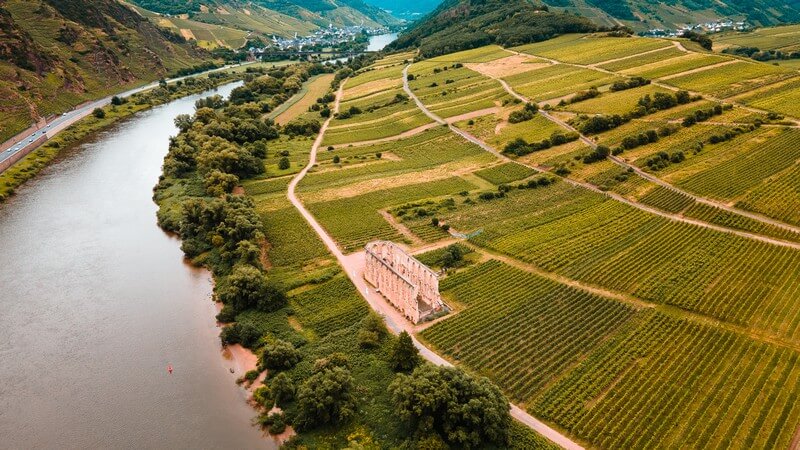
From the monastery, you can also hike up the Petersberg and marvel at the steep vineyards. The Petersberg is also home to the last mountain cemetery with a chapel still in use on the Moselle.
8. Bremm – Calmont
Directly opposite the monastery, on the other side of the Moselle, lies the wine village of Bremm on what is probably the most famous Moselle bend.
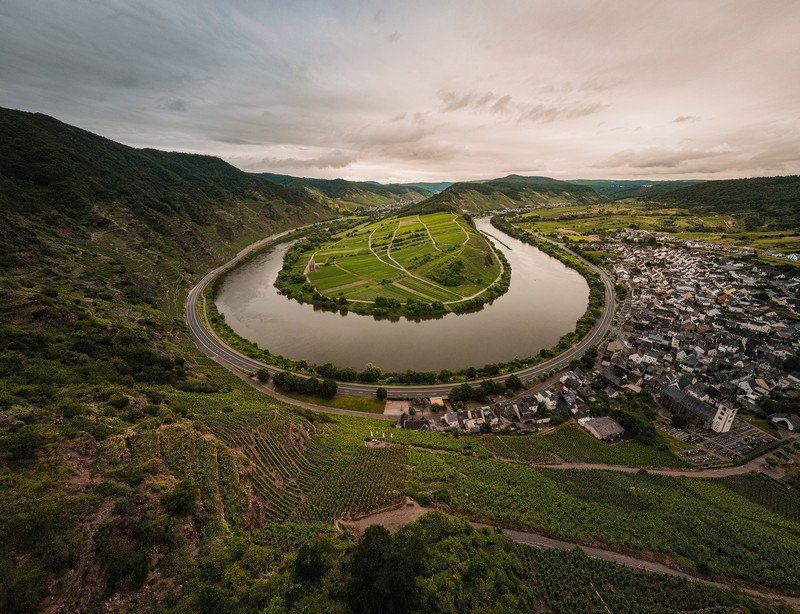
The extremely steep slopes are particularly striking here, but wine is still grown on them. The Calmont mountain is 378 meters high and has a gradient of around 65 degrees, making it the steepest vineyard in Europe.
The Moselle here in the region is quite steep and the vineyard slopes live up to their name. Some of the vineyards here are so steep that I wonder how anyone is supposed to pick the ripe vines. I’ve done this myself as a job before, but in the flat vineyards of southern New Zealand. And that was exhausting enough ;)
from my travel notes
9. Prinzenkopf tower
The 27-metre-high Prinzenkopf tower stands on a hill right between Pünderich and Bullay. It is considered one of the most beautiful vantage points on the Moselle and even the short hike past vineyards and the Marienburg castle to the top is worthwhile.
The panoramic view over the almost 14 km long Moselle loop “Zeller Hamm” is truly breathtaking.
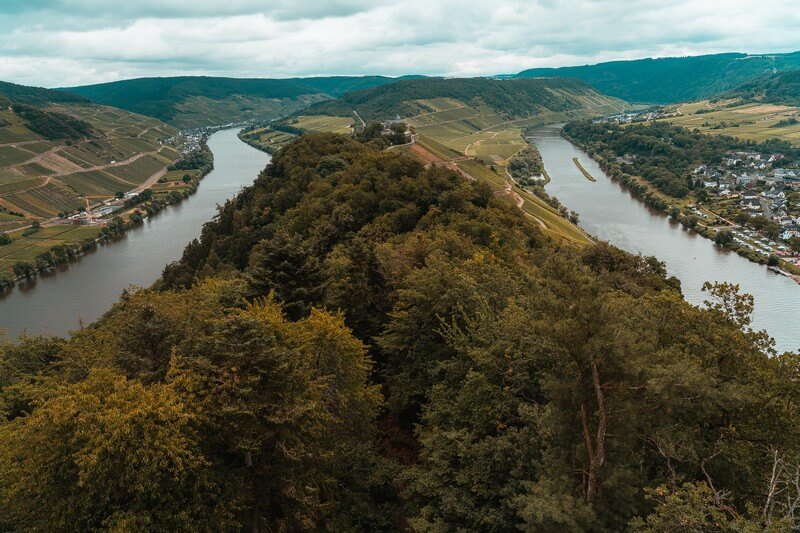
10. Traben-Trarbach
Magnificent Art Nouveau villas, numerous wine cellars and the two districts of Traben on one side of the Moselle and Trarbach on the other characterize this romantic Moselle town. In the 19th century, the town was even one of the most important wine trading centers in Europe.
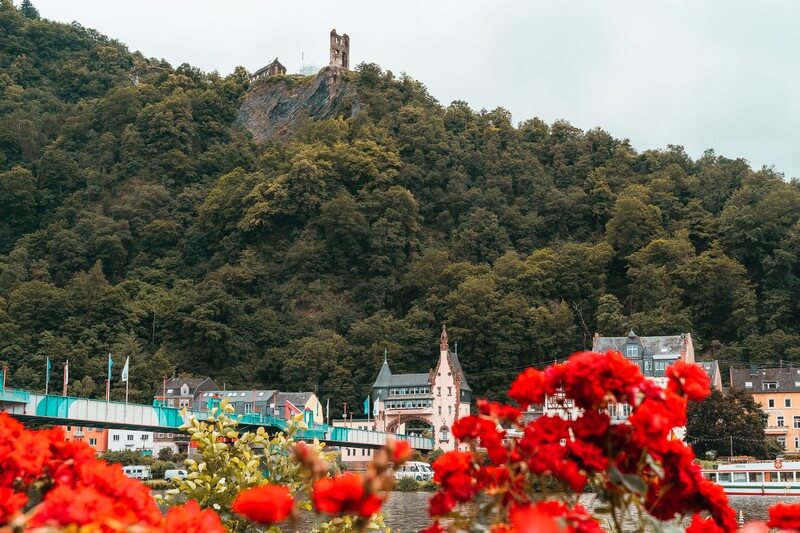
You can also spend the night in some of the Art Nouveau villas, e.g. in the 4-star superior Romantik Jugendstilhotel Bellevue, which dates back to 1903.
11. Bernkastel-Kues
One of the most famous tourist towns on the Moselle is Bernkastel-Kues. And the beautiful half-timbered houses scattered throughout the town alone make it well worth a visit.
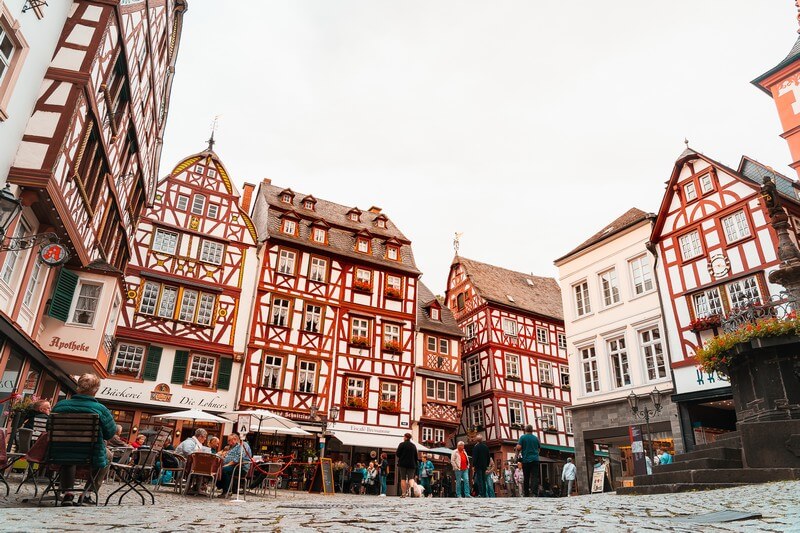
But I also found it cool to explore the narrow and not always easy to find paths a little further away to the surrounding vineyards.
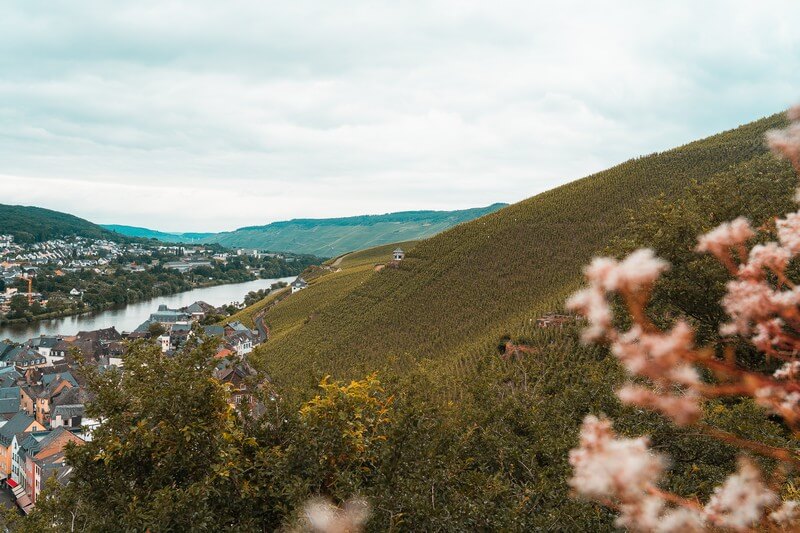
You should also pay a visit to the Spitzhäuschen in the old town. This not-so-straightforward building is a wine bar where you can sample some of the region’s wines.
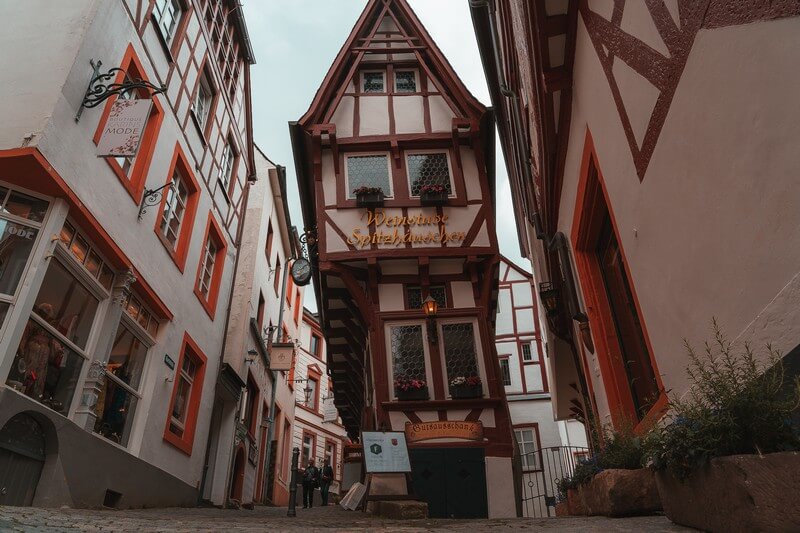
12. Neumagen-Dhron
Do you know the oldest wine village in Germany? You do now. It’s Neumagen-Dhron on the Moselle. The Romans were already growing wine and trading here 2,000 years ago. In various excavations, a total of 4 ships belonging to a Roman wine merchant from the 3rd century were also found here.
A replica of the Roman wine ship “Stella Noviomagi” still takes visitors across the Moselle today.
13. Roman Villa Urbana
It should be clear by now that the Romans are responsible for winegrowing on the Moselle. The Roman villa near Longuich is a particularly impressive architectural remnant from Roman times. This is a magnificent Roman estate with a bathing complex, which has also been rebuilt and which you can visit free of charge.
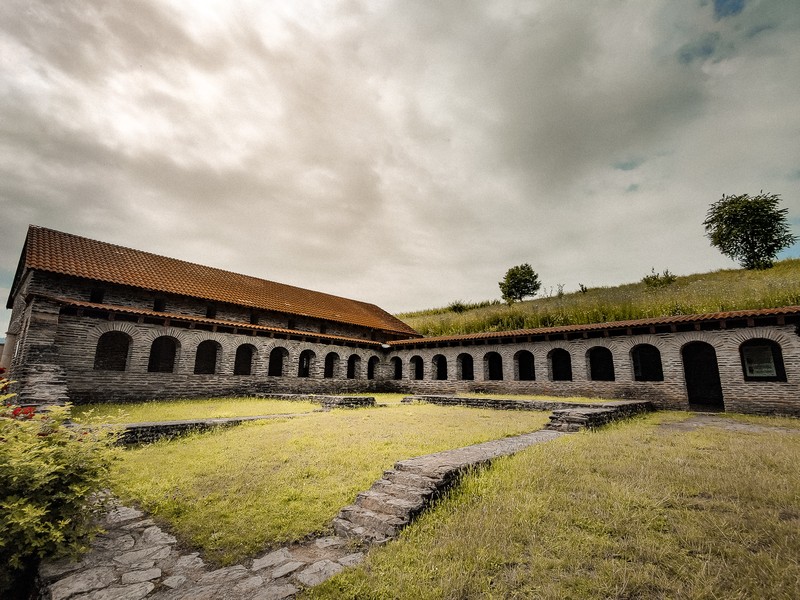
14. Trier
Trier is not only the oldest city in Germany, but also a great idea for a short city trip. There is a lot to discover here, especially the remnants from the time when the Romans were still in charge. It is not without reason that many of the buildings in the city of Trier are UNESCO World Heritage Sites. But there are also a few highlights that have nothing to do with ancient Rome.
Amphitheater
Wander through the grounds where gladiators once swung their swords and an angry crowd of spectators shouted and stomped loudly from the stands. In the amphitheater in Trier, you can soak up a little of this atmosphere, as the entire site is accessible, including the underground part.

The amphitheater is part of the UNESCO World Heritage Site and costs €4 per adult.
Roman bridge
The Roman bridge in Trier is the oldest bridge in Germany. Although it was still made of wood when it was built in around 17 BC, it was already an important transportation hub for crossing the Moselle back then.
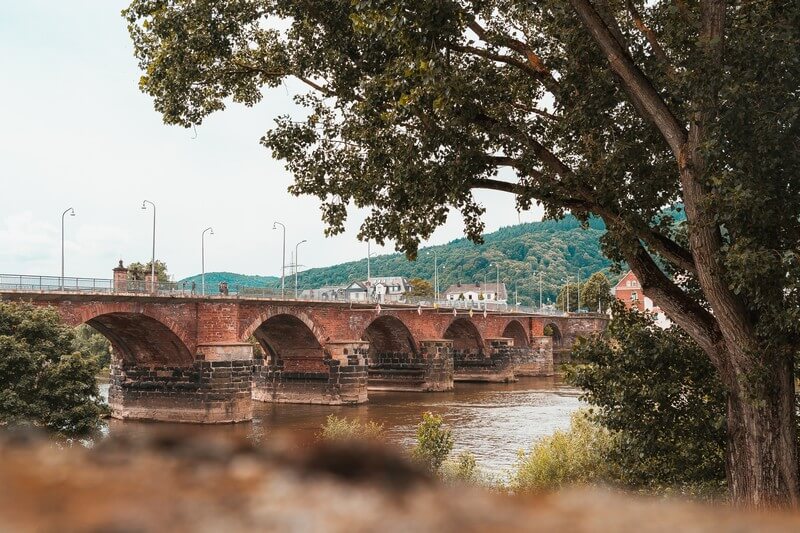
Imperial Baths
For an entrance fee of €4, you can visit the ruins of the Imperial Baths, which were built in the 3rd century. This includes the above-ground and underground parts of the complex. There is also an audio guide.
Constantine Basilica and Electoral Palace
Around the year 310, Emperor Constantine the Great had the Aula Palatina built, which today bears the name “Constantine Basilica”.
It looks as if the electoral palace and the Constantine Basilica belong together. But there is a difference of around 1,000 years between the two buildings.
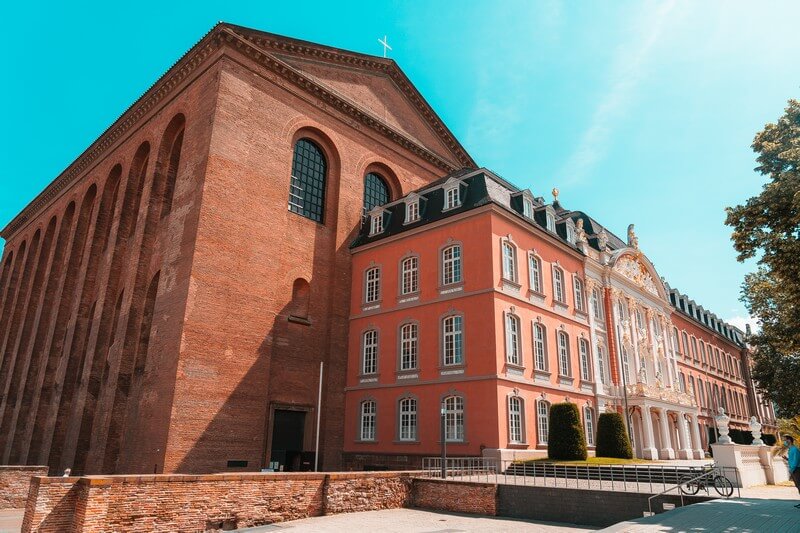
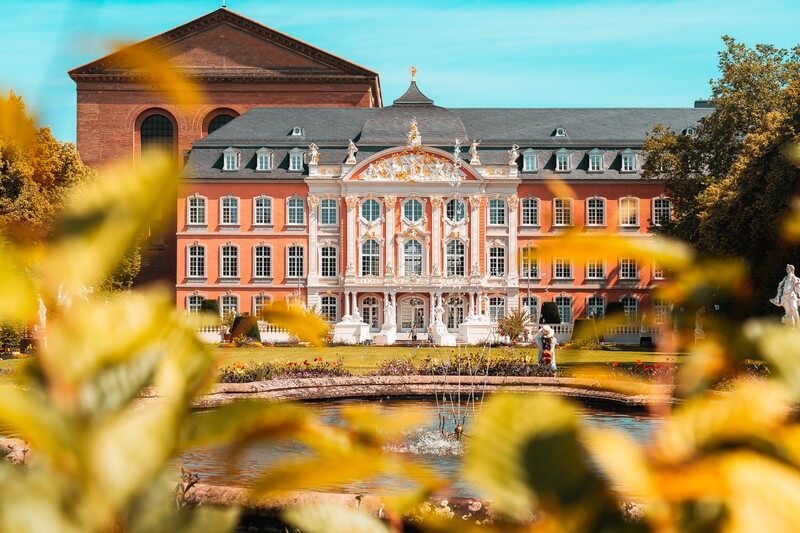
Karl Marx House Museum
Before my visit, I didn’t know that Trier was in principle the origin of communism. Because none other than Karl Marx, the founder of this world view, was born in Trier. There is an exhibition in his birthplace where you can learn all about his life and work.

Petrisberg viewpoint
One of the best views of the city is from the Petrisberg. Although numerous tour buses arrive here regularly, this does not detract from the magnificent panoramic view over the vineyards and rooftops of Trier.
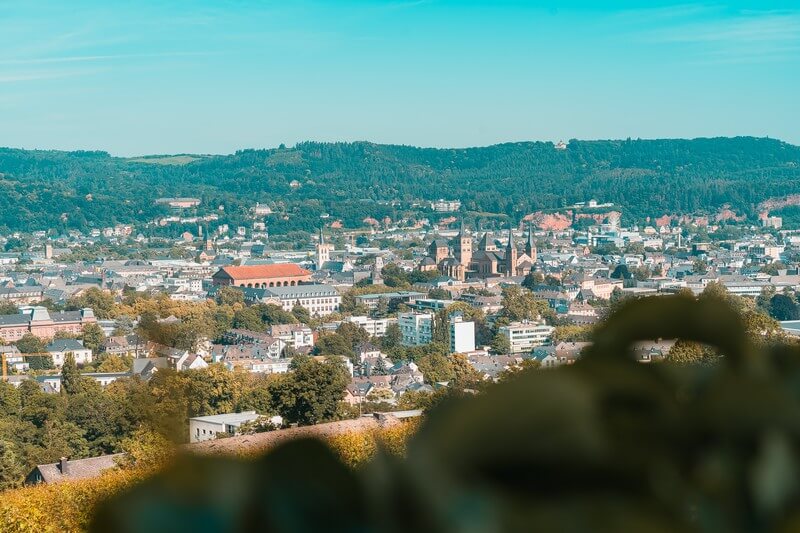
Porta Nigra
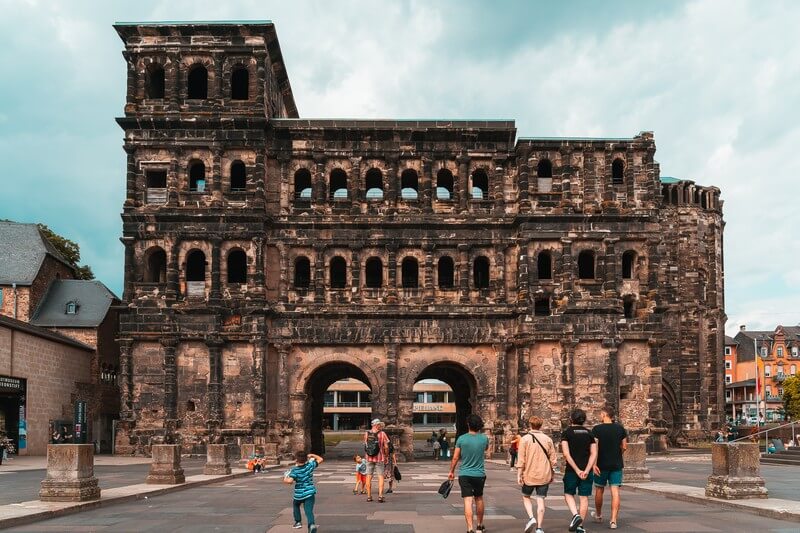
Accommodation in Trier
As befits a historic city, there is no shortage of accommodation in Trier. An exceptional overnight stay awaits you at the Hotel Villa Hügel. It has a large sauna area with a pool and an outdoor pool on the roof with panoramic views over Trier.
15. Devil’s Gorge
The Devil’s Gorge (Teufelsschlucht) is no longer really on the Moselle. But if you’re ever in Trier, you shouldn’t miss the 30-minute drive to this fantastic natural highlight.
From the Teufelsschlucht Nature Park Center, a fantastic hiking trail leads through the gorge, past imposing, metre-high rock faces, through the mystical forest in which the roots of the trees cling to holey stones.
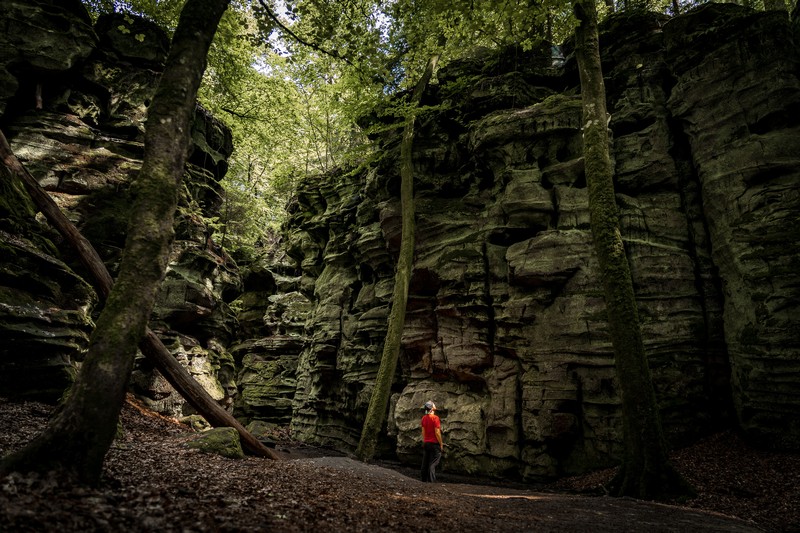
There are several paths through the area. There are also easier ones for families. The best known is probably the 17 km long Felsenweg 6, which starts and ends at the Felsenweiher hiking parking lot. If you don’t have that much time, then take the 3.5 km long “Großer Rundweg” instead. This starts from the nature park center.
But there are many more hiking trails throughout the region. Take a look here.
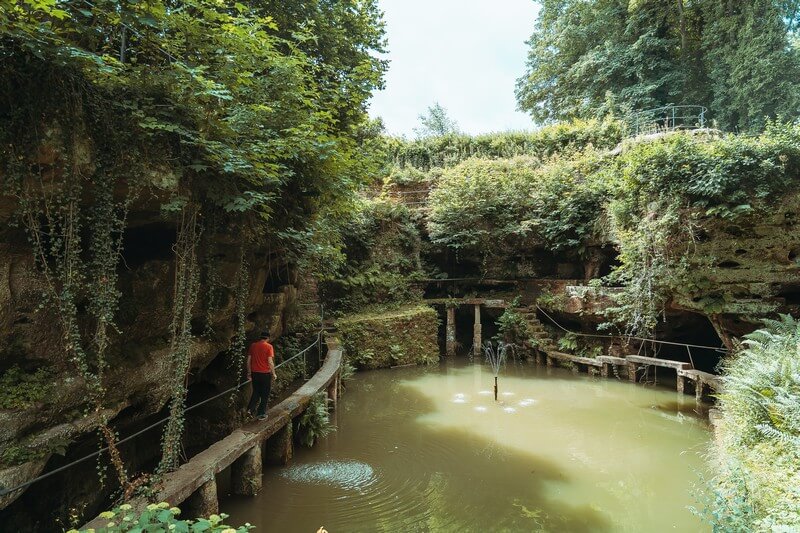
As you can see, there are some spectacular sights to discover along the Moselle. Which is your favorite? Or is there perhaps a Moselle attraction missing from this list? I look forward to your comments.

